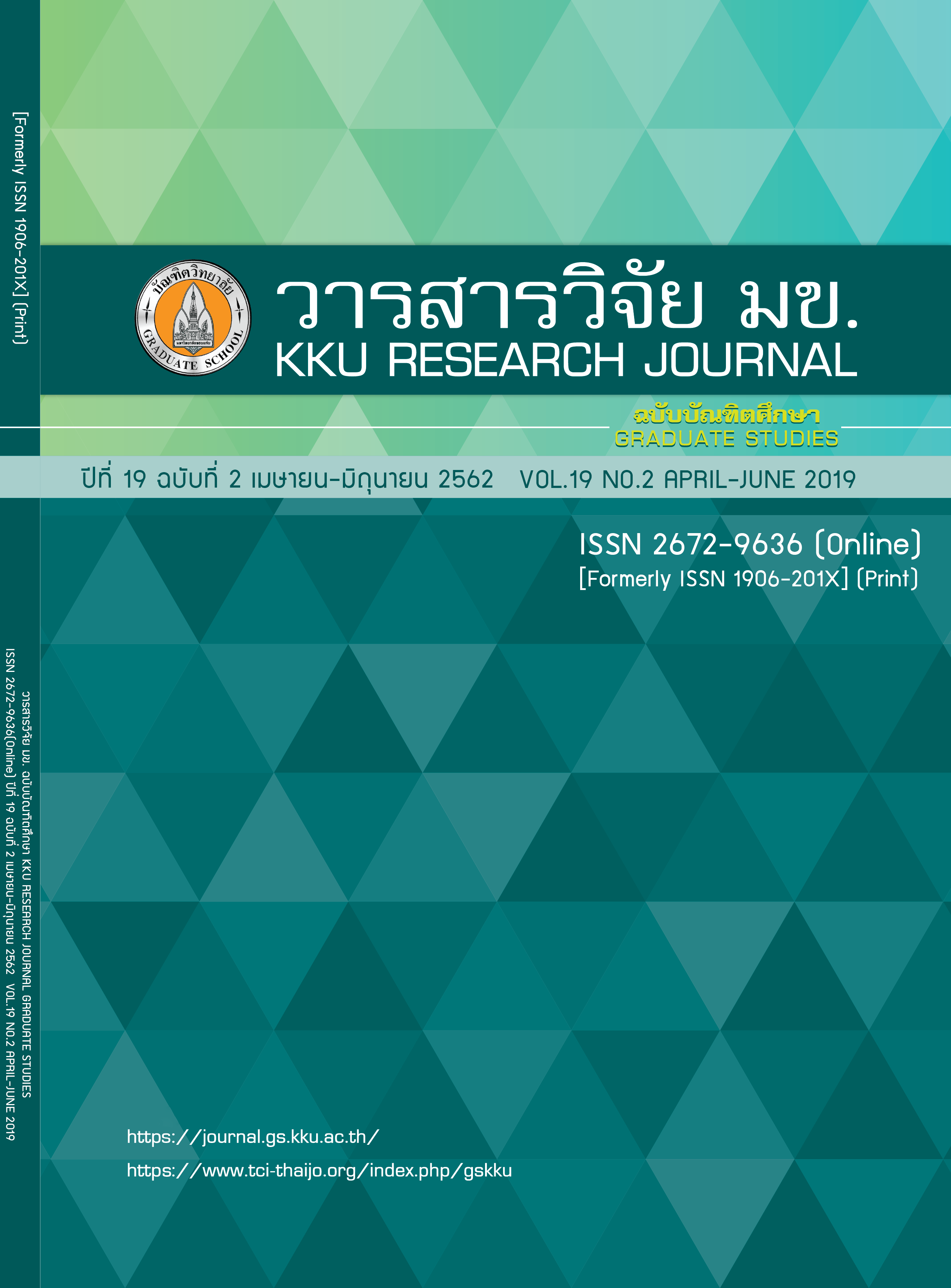Sound Absorption of Pervious Concrete Containing Various Sizes of Coarse Aggregate
Keywords:
Porous concrete, Water permeability, Cement pasteAbstract
Pervious concrete is a special type of concrete with high porosity and continuous void that allowsairorwater to passdirectly through. This paper presents the effect of aggregate sizes and paste contents (15, 20, and 25% by volume) on properties of previous concrete.Portland cement type I, crushed limestone with particle size ranges of 2.37-4.75, 4.75-9.53, 9.53-12.70, and 12.70-19.05 mm (No.8-No.4, No.4-3/8”, 3/8”-1/2” and1/2”-3/4”), water to cement ratio of 0.30, and superplasticizer type F were used in pervious concrete mixture. The results found that the densities, compressive strengths, and water permeability coefficients of pervious concrete were 1753-1936kg/m3, 103-168 kg/cm2, and 10-49 mm/sec, respectively. In addition, the high sound absorption of pervious concrete was found in low paste content mixture. The use of smallcoarse aggregate size gave better sound absorption than that of big aggregate size. These obtained results would lay a good direction for the future pervious concrete application.
References
2. American Concrete Institute. Pervious concrete. Report No. 522R-13. Detroit, Michigan, USA: The Association; 2013.
3. Golroo A, Tighe SL. Alternative modeling framework for pervious concrete pavement condition analysis. Constr. Build. Mater. 2011; 25: 4043-4051.
4. American Society for Testing and Materials. Standard Specification for Portland CementASTM C150/C150M-15. Annual Book of ASTM Standard; 2015
5. American Society for Testing and Materials. Standard test method for density and void content of hardened pervious concrete ASTM C1754/C1754M-12. Annual Book of ASTM Standard; 2012.
6. Zaetang Y, Sata V, Wongsa A, Chindaprasirt P. Properties of pervious concrete containing recycled concrete block aggregate and recycled concrete aggregate. Constr. Build. Mater. 2016; 111: 15–21.
7. Ngohpok C, Sata V, Satiennam T, Klungboonkrong P, Chindaprasirt P. Mechanical Properties, Thermal Conductivity, and Sound Absorption of Pervious Concrete Containing Recycled Concrete and Bottom Ash Aggregates. KSCE J. Civil Eng. Epub 2017 Aug 1.
8. American Society for Testing and Materials. Standard Test Method for Compressive Strength of Cylindrical ASTM C39/C39M-17b. Concrete Specimens. Annual Book of ASTM Standard; 2017.
9. International Organization for Standardization.Acoustics determination of sound absorption coefficient and impedance or admittance by the impedance tube ISO10534-2 Part 2: Transfer function method; 2015.
10. American Society for Testing and Materials. Standard Test Method for Sound Absorption and Sound Absorption Coefficients by the Reverberation Room Method ASTM C423-17. Annual Book of ASTM Standard; 2017.
11. American Concrete Institute. Guide for structural lightweight aggregate concrete. Report No. 213R-14. Detroit, Michigan, USA: The Association; 2014.
12. Chindaprasirt P, Homwuttiwong S,Jaturapitakkul C. Strength and water permeability of concrete containing palm oil fuel ash and rice husk–bark ash. Constr. Build. Mater.2007; 21: 1492–1499.
13. Kia A, Wong HS,Cheeseman CR. Clogging in permeable concrete: A review. J. Environ. Manage.2017; 193: 221-233.
14. Ghizdavet Z, Stefan BM, NastacD, VasileO, BratuM. Sound absorbing materials made by embedding crumb rubber waste in a concrete matrix. Constr. Build. Mater. 2016; 124: 755–763.
15. Kim HK, Lee HK. Acoustic absorption modeling of porous concrete considering the gradation and shape of aggregates and void ratio. J. Sound. Vib. 2010; 329: 866-879.


